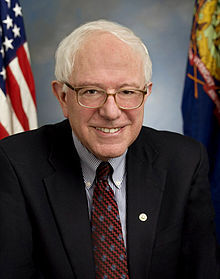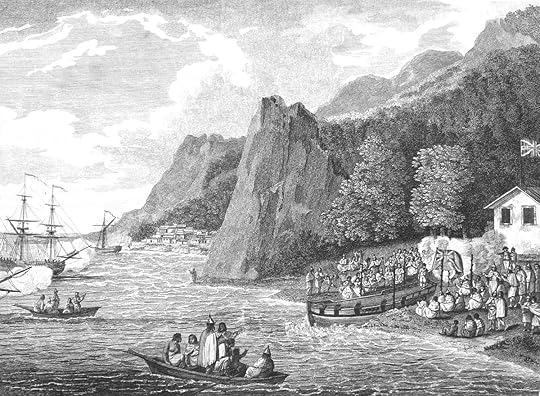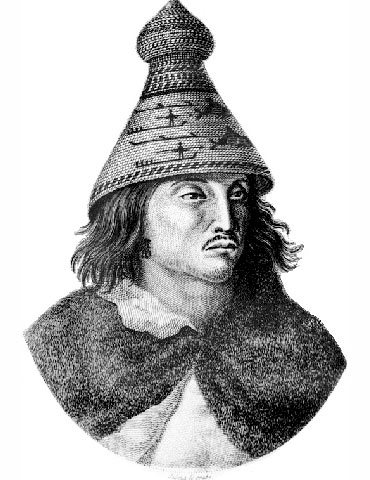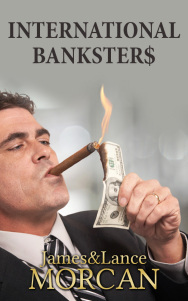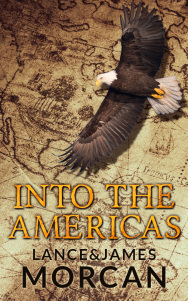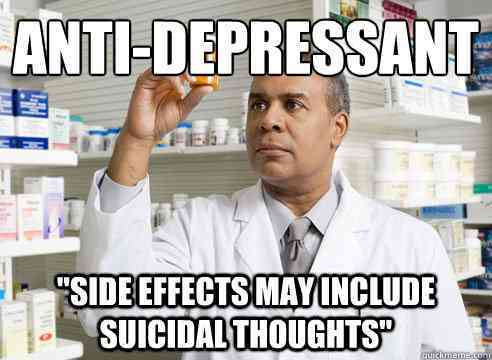Lance Morcan's Blog, page 59
September 11, 2015
New book reveals kickbacks for doctors more widespread than you may imagine
The unseemly subject of kickbacks, or illicit payments, for doctors – from the likes of the big pharmaceutical companies and medical equipment suppliers – is addressed in our controversial new book MEDICAL INDUSTRIAL COMPLEX: The $ickness Industry, Big Pharma and Suppressed Cures.
We devote an entire chapter to kickbacks in our book. However, we stress to readers we have no wish to denigrate doctors, or to denigrate anyone who devotes their life to helping fellow man.
After all, it was Cicero who said, “In nothing do men more nearly approach the gods than in giving health to men.”
Certainly, the medical profession, in its purest form, is a noble one. And doctors are clearly at the apex of the profession.
And we stress that those who do (abuse their position) are very much in the minority. That said, the number of doctors who have brought their profession into disrepute, worldwide, is staggeringly high. Certainly far too many for so noble a profession, we would argue.
___________________________________
“The vast majority of curricula that are taught in medical schools in this country (USA) were put together by organizations that were founded by, or are funded by, pharmaceutical companies.” –T.C. Hale, natural health expert
___________________________________
It would be remiss of us not to bring your attention to some, shall we say, gaps in the system – gaps that allow doctors to abuse their position if they are so inclined.
Relevant excerpts from Medical Industrial Complex follow:
The following report was aired by BBC News on November 6, 2014: “Until recently, paying bribes to doctors to prescribe their drugs was commonplace at big pharmas, although the practice is now generally frowned upon and illegal in many places. GSK (GlaxoSmithKline) was fined $490m in China in September for bribery and has been accused of similar practices in Poland and the Middle East.
“The rules on gifts, educational grants and sponsoring lectures, for example, are less clear cut, and these practices remain commonplace in the US. Indeed a recent study found that doctors in the US receiving payments from pharma companies were twice as likely to prescribe their drugs.
“This may well exacerbate the problem of overspending on drugs by governments. A recent study by Prescribing Analytics suggested that the UK’s National Health Service could save up to £1bn a year by doctors switching from branded to equally effective generic versions of the drugs”.
___________________________________
“Isn’t it a bit unnerving that doctors call what they do practice?” –Grammy-winning American actor/author George Carlin
___________________________________
The “recent study” referred to by BBC News was a detailed 61-page report compiled by the University of California, San Diego (UCSD), and dated January 2014.
This report starts out with the comment that “While rent-seeking behavior may not be surprising generally, that financial conflicts of interest could influence physicians’ advice might be less expected. For one, doctors are highly paid, with most falling in the top 5% of the income distribution within the US”.
The UCSD report continues, “When drug companies have financial relationships with physicians, medical decisions may be influenced by pecuniary motives not directly related to patient health…
“We find that men are over twice as sensitive to payments as women. This confirms experimental and field evidence suggesting that women are, on average, more honest and less corruptible than men”.
The report’s conclusion is that “Using data from twelve drug companies, more than 330,000 physicians and nearly one billion prescriptions, we find that when a drug company pays a doctor he is more likely to prescribe that company’s drug…
___________________________________
“The purpose of a doctor or any human in general should not be to simply delay the death of the patient, but to increase the person’s quality of life.” –Patch Adams
___________________________________
A US Federal Government report unveiled in September 2014, detailing 4.4 million payments made to doctors and teaching hospitals by pharmaceutical and medical device companies sheds more light on the vexing kickbacks issue.
ProPublica.com, a watchdog site that prides itself on providing “journalism in the public interest,” analyzes the Federal Government report in an article dated September 30, 2014 by award-winning reporter Charles Ornstein….
Ornstein points out that the Federal Government’s “new trove of data” covers the period August to December 2013. He writes, “According to officials from the Centers for Medicare and Medicaid Services, companies spent a total of $3.5 billion during that period on 546,000 individual physicians and almost 1,360 teaching hospitals”.
Under the heading ‘Where Did the Payments Go?’, Ornstein provides the following breakdown of general payments (that drug companies make to physicians) by category. (Amounts in US dollars):
Royalty or licence payments – $302m; promotional speaking – $202.6m; consulting fees – $158.2m; food and beverage – $92.8m; travel and lodging – $74.1m; grants – $38.1m; education – $26.7m; honoraria – $25.5m; gifts – $19.2m; the balance of payments included space rental, charitable contributions and entertainment. (Payments excluded research or fees to physician owners of a company)…
He concludes, “Doctors were paid for more than 200,000 trips by companies in the last five months of the year…Their top destinations were Toronto, Copenhagen, Amsterdam, Paris and Barcelona. Drug and device makers paid for doctors to travel to about 80 countries in all”.
__________________________________
“An apple a day, if well aimed, keeps the doctor away.” –P.G. Wodehouse
__________________________________
Ornstein also figures in an item CBS News ran on March 4, 2014. Headed ‘Does your doctor have ties to Big Pharma,’ the report states, “Big pharma routinely pays doctors to promote its products, but soon patients will be able to get a clearer picture about a doctor’s possible connections to the companies that make the drugs they may prescribe”.
The report continues, “The practice of pharmaceutical companies working with doctors to develop new medications to treat conditions and help promote those medications has been in place for decades, but Ornstein, who is investigating this practice, says, ‘The promotion part has gotten a lot of attention in recent years because drug companies have paid hundreds of millions and sometimes billions of dollars to settle lawsuits that have accused them of improper marketing and giving kickbacks to doctors’.”
The same report addresses the all-important issue of trust – trust between patient and doctor. As Ornstein points out, “When you go to your doctor, you trust that the doctor is giving the best medication for you, but there’s a lot of different interests that your doctor has to take in mind in prescribing you drugs”.
In response, Matthew Bennett, senior vice president of the Pharmaceutical Research and Manufacturers of America, is reported by CBS News as saying the discovery of new and improved medicines is dependent on research collaborations between physicians and biopharmaceutical companies. “Clinical trials sponsored by biopharmaceutical companies have led to breakthroughs for people suffering from cancer and other life-threatening diseases”.
We don’t doubt there’s some truth to that, but it doesn’t address the concerns held by many – that it’s illegal to give kickbacks to doctors to prescribe drugs.
Of equal concern to us is that it is legal for pharmaceutical companies to give money to doctors to help promote their drugs. How tempting it must be for doctors to put impartiality aside when recommending certain drugs to patients. And how tempting it must be for unscrupulous doctors to recommend lesser or inferior drugs, knowing promotional payments – aka kickbacks – are on offer.
As Ornstein advised CBS News, “Some doctors make tens of thousands or hundreds of thousands of dollars a year beyond their normal practice just for working with the industry”.
Yes, you read that right: tens of thousands or hundreds of thousands of dollars a year beyond their normal practice.
Of course, this is nothing new. The practice has been around for ages, but we’ve limited the bulk of our research to cases dating back to the mid-2000’s.
One earlier case that caught our attention was reported by New York Times on March 3, 2009. Under the heading ‘Crackdown on Doctors Who Take Kickbacks,’ reporter Gardiner Harris writes, “Federal health officials and prosecutors, frustrated that they have been unable to stop illegal kickbacks to doctors from drug and device companies, are investigating doctors who take money for using these products”.
Harris states, “For years, prosecutors rarely pursued doctors because they believed that juries would sympathize with respected clinicians. But within a few months, officials plan to file civil and criminal charges against a number of surgeons who they say demanded profitable consulting agreements from device makers in exchange for using their products.
“The move against doctors is part of a diverse campaign to curb industry marketing tactics that enrich doctors but increase health care costs and sometimes endanger patients. Taken together, the new measures are likely to transform the relationship between medicine and industry”.
Harris concludes with a quote by the US attorney, Mr Sullivan, who said, “Officials hoped to send a strong message to doctors,” and “I have been shocked at what appears to be wilful blindness by folks in the physician community to the criminal conduct that corrupts the patient-physician relationship”.
___________________________________
“Doctors put drugs of which they know little into bodies of which they know less for diseases of which they know nothing at all.” –Voltaire
___________________________________
A Washington Post report that was picked up by media around the world in February 2015 points out that Americans spent $329 billion, or approximately $1000 per person, on prescription drugs in 2013. Quoting John Oliver, of the Last Week Tonight show as its source, the newspaper reports that nine out of the 10 big pharmaceutical companies spend less on research than on marketing. (A lot less as it turns out).
The report confirms that US television channels screen ads for pharmaceutical products that require a doctor’s prescriptions. It concludes with the following quote from Oliver: “Ask your doctor today if he’s taking pharmaceutical money (then ask) what the money is for…Then ask yourself if you’re satisfied with that answer”.
#
Little mention has been made thus far of kickbacks physicians receive from medical equipment manufacturers and suppliers. As with the relationship between the pharmaceutical companies and doctors, business dealings between medical equipment representatives and doctors are worthy of scrutiny.
There’s no doubt that an honest relationship between these two parties makes for a win-win for all. There’s potential to progress science and technology, and to help ensure the health and safety of patients. However, the key word here is honest. For there is potential for fraud and abuse, and, as it turns out, some are taking advantage of this…
For a snapshot of just how widespread corruption is within the medical equipment supply sector, and unfortunately, amongst their clients within the medical profession, take a look at the website of New York trial lawyer John Howley, Esq. It lists numerous examples of historic kickbacks deemed illegal under the Anti-kickback Statute and subsequently successfully prosecuted.
These examples include the case of a physician and the owner of a medical supply company pleading guilty to a conspiracy to defraud Medicare by submitting false claims for power wheelchairs, a durable medical equipment (DME) supplier being imprisoned for paying kickbacks to co-conspirators for medical prescriptions and a doctor pleading guilty to accepting kickbacks from the makers of power wheelchairs and other DME…
Hopefully, this insight into doctors’ kickbacks from the likes of Big Pharma and the medical equipment suppliers hasn’t destroyed your faith in your family doctor. We stress that those who succumb to the temptations on offer are in the minority and so, statistically speaking, we’d like to think there’s a very small chance your doctor is one of the culprits.
However, if you are tempted to consider alternatives (to conventional medicine) then upcoming chapters on alternative health and natural medicine may well be of interest…
You have been reading an excerpt from Medical Industrial Complex. This top rating book is available on Amazon: http://www.amazon.com/MEDICAL-INDUSTRIAL-COMPLEX-Suppressed-Underground-ebook/dp/B00Y8Y3TUM/
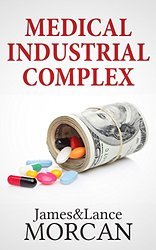
*************************************
September 10, 2015
The novel ‘Into the Americas’ captures horror of 1803 massacre at Nootka Sound
Young English seaman John Jewitt was one of only two survivors after the crew of the brigantine The Boston was attacked by Mowachaht warriors in Nootka Sound, Vancouver Island, one fateful day in 1803.
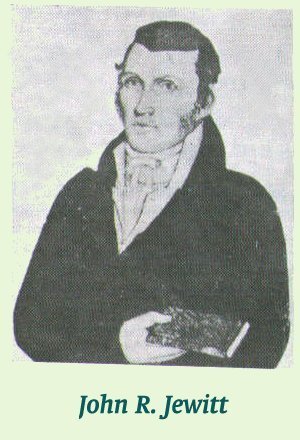
Jewitt after the massacre…years later.
We capture the horror of that bloody massacre in the following excerpt from our true-life novel Into the Americas. (Keep in mind what’s not shown in this excerpt is the provocation the Mowachahts had received from European traders prior to this awful event):
As Toowin related what happened, Peshwar and the other warriors gathered around. They grew increasingly angry, glaring at the crewmen concerned, as they learned what had transpired ashore. Jostling broke out between the warriors and some of the crew.
Those crewmen who were armed brandished their muskets threateningly.
“Hold your fire, men!” Delouissa ordered. He didn’t want some trigger-happy sailor sparking a pitched battle on deck.
Maquina and his warriors were now highly agitated. Peshwar in particular wanted blood. He approached the crewmen who formed a protective wall in front of Brown and Waters.
Seventeen-year-old, fresh-faced English sailor Thomas Newton happened to be closest to the fierce headman. Newton visibly shook as Peshwar stopped in front of him. Sweating profusely, the youth’s finger tightened around the trigger of his musket.
“Steady lad,” Delouissa cautioned.
Looking on, Salter and Maquina were equally concerned that events were escalating out of control.
“Do not let them provoke us!” Maquina shouted to his warriors. “We are here to trade. Not fight.”
Peshwar ignored the chief and continued to eyeball Newton. The young sailor pissed his breeches, so fearful was he.
Maquina pulled Peshwar back just as Newton fired his musket. The musket ball meant for the headman struck a warrior standing behind him, killing him instantly.
The Mowachahts and Salter’s men couldn’t believe what had just happened. Time seemed to stand still as they stared at the dead warrior.
Still fearing for his life, Newton frantically began to prime his musket. His actions sparked the others to life. Armed crewmen prepared to use their weapons.
Angered by the death of one of their own, the Mowachahts drew clubs, knives and tomahawks from beneath their capes. Their chilling war cries filled the air, causing the crewmen to open fire. Several warriors went down in that first volley.
“Stop shooting!” Salter shouted. His order was lost in the chaos.
Crewmen fired at point-blank range and several more warriors went down. Incensed, the remaining warriors, with Maquina and Peshwar leading the way, flailed at their attackers with their weapons. Dorthy and three crewmates were hacked to death before they could even react.
Newton dived over the brig’s side into the water where he was clubbed to death by one of a dozen more warriors who had just arrived alongside The Boston by canoe. The canoe’s occupants, most of whom carried muskets, scaled the brig’s side. As they poured over the rail, The Boston’s remaining crew found themselves fighting for their lives.
Brown and Waters fled as Toowin made straight for them. The chief’s son threw his tomahawk, which lodged dead center in Brown’s back, felling him. He then drew his hunting knife and threw it at Waters with equal effect. It struck the young steward between the shoulder blades, causing him to sink to his knees, badly wounded. Toowin hurried over to Waters, retrieved his knife then used it to unceremoniously cut the young man’s throat.
Delouissa shot dead a Mowachaht headman. The chief mate turned around too late to avoid a spinning tomahawk, which lodged between his eyes, catapulting him overboard.
A tall warrior with knife in hand lunged at the unarmed rigger Kelly. The poetic Englishman evaded the flashing blade and scrambled up the nearest mast. His attacker put the blade between his teeth and climbed after him.
Jupiter Senegal ran to intercept the tall warrior. An arrow thudded into Jupiter’s chest, killing him instantly. Around him, crewmates were bludgeoned and shot as still more Mowachahts arrived on The Boston’s deck.
Drawn by the sounds of conflict, John had hurried topside to investigate. A quick glance through an open hatch had told him all he needed to know. A full-scale battle was under way. Realizing he wasn’t armed, the horrified young man returned below to grab a musket. He returned moments later, having located and primed a new musket from the armory.
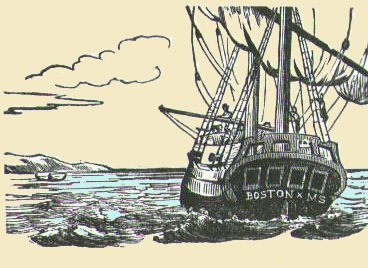
The brig The Boston.
His heart beating wildly, John cautiously poked his head through the same open hatch. Unfortunately for him, Peshwar happened by at that exact moment. The headman grabbed John by the hair and raised his tomahawk. Just as he brought the weapon down, he lost his grip on the young Englishman’s hair. The tomahawk’s cutting edge clipped John’s forehead. It was only a glancing blow, but it sent him crashing down the steps.
John lay, unmoving, down in the steerage. Blood flowed freely from an ugly head wound.
Peshwar prepared to go down the steps after him, but was prevented by Maquina who lowered a heavy hatch cover and locked it to seal John in. The headman looked strangely at the chief, as if seeking an explanation.
“We need him,” Maquina said simply.
Peshwar was about to argue when he was distracted by the fighting around them. He and Maquina rejoined the fray.
Further along the deck, a desperate Salter tried to rally his remaining crew. “To me!” he shouted. “Form a circle!”
The surviving crewmen fought their way to reach their captain. Not all made it. Those who did, formed a tight circle and faced outward with their muskets and pistols ready.
Salter did a quick headcount. He estimated not a dozen of his men remained alive. Only half a dozen had made it to his side, and those who hadn’t were rapidly being overcome by the Mowachahts’ superior numbers.
At the bow, riggers Wood and Burton tried to keep half a dozen warriors at bay. The pair were armed only with knives, which they used to good effect. Each felled a warrior with deft thrusts of their blades before the inevitable happened and they went down beneath swinging tomahawks and clubs.
Toward the stern, John’s friend William Ingraham flailed at two warriors with a grappling hook he’d managed to grab as he’d been chased along the deck. Blood from a head wound flowed freely, nearly blinding him.
One of William’s assailants was Keno, the warrior whose musket had malfunctioned on shore. Keno threw a tomahawk at the young American’s legs. Its blade lodged in William’s right kneecap, felling him. The second mate rolled around on deck, screaming in agony, as Keno prepared to finish him off. Rather than finishing him quickly, Keno retrieved his tomahawk and, using his foot, pushed his victim through the railing into the sea where waiting sharks tore into him. The sharks had been attracted by the blood of others who had gone overboard.
As they had with the other crewmen who had ended up in the water, warriors in one of the waiting canoes pulled William into their craft before he could be completely devoured. His lifeless body was heaped on top of the others. The victims’ blood turned seawater in the bottom of the canoe red.
Above deck, Kelly was still being pursued up the mast by the tall warrior. Now high in the rigging, Kelly looked down as his pursuer lashed out at his legs with his knife. The rigger lifted his knees to his chest to narrowly avoid the flashing blade then continued climbing for all he was worth.
When he’d climbed as far as he could, he lifted his knees up once more then brought both feet down hard on his pursuer’s head. The tall warrior fell to his death.
From his vantage point, Kelly could only watch as still more warriors swarmed over The Boston’s sides. Arrows, tomahawks and musket-fire struck down more of his crewmates.
By now, only Salter and three of his crew remained alive on deck. They fought with the desperation of men who knew they were about to die.
Salter was the first to fall, an arrow through his throat. He lay rolling about the deck as he struggled to breath. One of the boatswains was next. He went down beneath a flailing club, leaving only Norwegian sailor Peter Alstrom and Irish sailor James McClay still on their feet. A well placed musket ball finished off McClay.
Maquina charged at Alstrom and decapitated him with one swing of his tomahawk. The Mowachaht chief held his victim’s head triumphantly aloft, and his warriors howled war cries at the sight.
Not to be outdone, Peshwar stood over Salter who was still alive although now obviously breathing his last. The headman swung his tomahawk, decapitating the captain. Peshwar then kicked Salter’s head, sending it rolling along the deck to the accompaniment of more war cries. The head came to a rest against the same mast that Kelly had scaled.
Only now did the Mowachahts turn their attention to the wounded English rigger high above them. Two warriors fired arrows at him. One landed in Kelly’s chest, another in his right thigh. Blood flowed freely from both wounds and Kelly had to fight against feelings of faintness.
You have been reading an excerpt from INTO THE AMERICAS (A novel based on a true story). The book is available on Amazon: http://www.amazon.com/Into-Americas-novel-based-story-ebook/dp/B00YJKM51E/
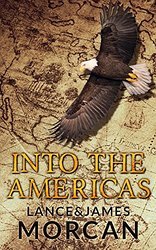
*********************************








September 8, 2015
Why are our children being exposed to potentially harmful drugs?
In our book MEDICAL INDUSTRIAL COMPLEX: The $ickness Industry, Big Pharma and Suppressed Cures, we focus on the alarming overmedication of children diagnosed, or misdiagnosed, as having ADHD, depression and other such ailments.
An excerpt from Medical Industrial Complex follows:
Overmedication of children diagnosed – and often misdiagnosed or even not diagnosed – with ADHD (Attention Deficit Hyperactivity Disorder) has, it seems, reached alarming levels, and the public debate has been as vocal as that surrounding the issue of overprescribing antidepressants.
By some estimates, around four million children in the US have been diagnosed with ADHD and more than half of them have been prescribed drugs. This despite the fact there are very real concerns about the impact the drugs have on growth and brain development – especially in preschoolers.

One who has had something to say on this matter of late is Dr. Nancy Rappaport, a certified child and adolescent psychiatrist at Cambridge Health Alliance and an associate professor of psychiatry at Harvard Medical School. In a Washington Post article dated June 4, 2014, and headed ‘We are overmedicating America’s poorest kids,’ she claims that thousands of children between the ages of two and three are being prescribed stimulants like Ritalin or Adderall for ADHD even though the medicine’s safety and effectiveness has barely been explored in that age group.
Dr. Rappaport says she finds it even more troubling that a disproportionate number of those children were on Medicaid, which to her is an indicator of poverty. “That,” she says, “is the huge red flag”.
Referring to her experience as a child psychiatrist, working with at-risk children for more than 20 years, she points out the simple fact is that underprivileged children often grow up in home environments that lead to troubling behavior.
“To the untrained observer, it looks as if these children suffer from ADHD. But they don’t need medicine. They need stability and support”.
This raises the obvious question: Why are physicians prescribing potentially harmful drugs instead of recommending family-based support services for toddlers who display ADHD symptoms and disruptive behavior?
Dr. Rappaport asks this very question. She says, “Medication may be judiciously used to help ADHD when a biological illness is truly present, but true ADHD cannot be differentiated from other problems at such young ages. We owe it to our children to give the consistent message that we will do whatever it takes to foster their development. And that doesn’t always mean prescribing a pill”.
Amen to that.
It’s a fact that in this modern era most of us look for a quick fix for whatever ails us or for whatever ails our children. Our willingness to pop a pill in order to get a good night’s sleep or to ease a queasy tummy or to clear a foggy head or to…(the list goes on) is frightening. Even more so when we pass such quick fix ideas onto our children.
We seem very willing to overlook the fact that all drugs – prescribed or otherwise – have side-effects. Sometimes deadly side-effects, often unhealthy or otherwise undesirable side-effects.
We also overlook the fact that oftentimes there’s a simple, readily available, natural remedy available for those day-to-day ailments we encounter.
For example, physical exercise has long been recognized as an effective way to combat depression. Not for all, granted, but, we suspect, for many.
The Atlantic article referred to earlier reports that a growing body of research suggests that exercise is one of its best cures for depression. It claims a randomized controlled trial showed that depressed adults who took part in aerobic exercise improved as much as those treated with Zoloft, and a recommendation was made that physicians counsel their depressed patients to try it.
A later study looked at 127 depressed people who hadn’t experienced relief from a commonly used antidepressant and found that exercise led 30% of them into remission – a result described “as good as, or better than” drugs alone.
The article continues, “Though we don’t know exactly how any antidepressant works, we think exercise combats depression by enhancing endorphins: natural chemicals that act like morphine and other painkillers. There’s also a theory that aerobic activity boosts norepinephrine, a neurotransmitter that plays a role in mood. And like antidepressants, exercise helps the brain grow new neurons”.
The article concludes that “this powerful, non-drug treatment” hasn’t yet become a mainstream remedy. Why not? And why are so many people still popping pills?
We suspect the conclusion speaks volumes about the state of our mental health services and infrastructure, the physician reimbursement system (more about doctors’ kickbacks coming up) and the alacrity with which doctors dispense prescription drugs ahead of advising on diet, exercise and other lifestyle changes.
Regrettably, it also speaks volumes about our unwillingness to take responsibility for, and control of, our own health, preferring, instead, to entrust that to our family doctor.
You have been reading an excerpt from Medical Industrial Complex. To find this book on Amazon go to: http://www.amazon.com/MEDICAL-INDUSTRIAL-COMPLEX-Suppressed-Underground-ebook/dp/B00Y8Y3TUM/

****************************************








September 6, 2015
Sanders preferred in US Presidential Election poll, Carson and Clinton trail, Trump trumped
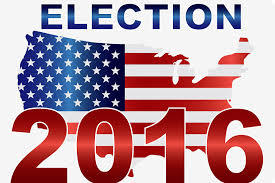
Bernie Sanders, the junior US Senator from Vermont, is by far and away the preferred US Presidential hopeful if the Underground Knowledge group’s on going poll on Goodreads.com is anything to go by. Sanders has thus far gotten more than twice the ‘vote’ of the nearest candidate.
Bernie Sanders…poll frontrunner.
In response to the question Who would you like to see win the 2016 United States presidential election?, interim poll results show 29% nominate Sanders / 12% prefer Ben Carson / 12% want Hillary Clinton / 8% want Donald Trump / 5% want Jeb Bush / 4% want Rand Paul.
Interestingly, 12% voted for NONE of the names on this list.
Poll respondents’ comments make for interesting reading. Here’s a few to go on with. (Respondents’ names withheld):
As if the presidency was some great seat of power. But as long as we’re pretending, how about someone like Jon Rappoport, not these decoys, half-wits and criminals.
With the higher IQ of this group, it’s inevitably biased towards Bernie. In fact, I’m a little surprised that anyone else even got a vote at all. If only the whole nation could mirror our group.
I am not impressed with any candidate but Bernie Sanders got my vote!If Joe Biden runs than he will get my vote!
Bernie has a plan, a heart…compassion, experience, and is not a corporate toy who has sold his soul. He is positive, not back biting, not belligerent, simply rational and naming the problems of this oh so corrupt corporate/political structure and advocating alternatives.
If Trump becomes President, we’ll end up being at war w/every country in the world!
(I nominate) Angelina Jolie.
The whole world should be allowed to vote in American presidential election. America controls all our lives.
Ben Carson seems good to me so far…Maybe Trump. But definitely NOT Hillary. *cough cough liar*
Will be a difficult election to predict a winner. Should be some heated debates between the likes of Hillary, Trump, Bernie and Bush!
Something tells me if a genuinely caring and uncompromising American candidate were to come along they would not belong to either of those two parties as “DemoCRIPS” and “ReBLOODlicans” are clearly in bed with big (multinational) corporations.
To view all the comments in our Underground Knowledge group poll, or better still to have YOUR say, go to: https://www.goodreads.com/poll/list/142309-underground-knowledge—a-discussion-group?type=group
*
The Underground Knowledge discussion group is open to everyone! All you need is an enquiring mind, an interest in the world we live in and a desire to learn or to uncover “underground knowledge” on important issues of our times. This group is also for like-minded people to discuss the controversial topics explored in The Underground Knowledge Series, which includes the non-fiction books Genius Intelligence, Antigravity Propulsion, Medical Industrial Complex and The Catcher in the Rye Enigma.
Our members include scientists, journalists, moms and dads, historians, doctors, whistleblowers, authors, bankers, teachers, intelligence personnel, housewives, students, Army vets, pacifists, conspiracy theorists, the odd redneck and the Average Joe. All viewpoints welcome!
To visit the group go to: https://www.goodreads.com/group/show/142309-underground-knowledge—a-discussion-group
**************************************
September 4, 2015
Bravery of First Nations people highlighted in ‘Into the Americas’ — the novel
The courage of the First Nations people of North America is highlighted in our new release historical adventure novel Into the Americas. In particular, we focus on the hardy Mowachahts, of Nootka Sound, Vancouver Island, and their powerful chief Maquina.
Nootka village, the traditional home of the Mowachaht tribe…as it once was.
The following excerpt from the novel describes a whale hunt, which was an annual event for the Mowachahts and other Nuu-chah-nulth peoples of the Pacific Northwest. This passage describes the Mowachahts’ first whale hunt of the season. (The year is 1803; the setting is the chilly waters off Nootka Sound):
“Big fish!” the cry went up from a warrior in the stern of the lead canoe.
Maquina looked directly ahead. A mile distant, water spouts revealed the presence of a pod of humpbacks. The chief stood up and, pointing at the whales, rubbed his stomach theatrically. “Tonight, we fill our bellies until we burst!” he declared.
Maquina’s men paddled with more urgency now. The times they and their families had gone hungry over the long winter months were still fresh in the minds of each. A successful kill would provide sufficient food to feed them and, indeed, all the villagers for many weeks to come.
The paddlers were breathing hard by the time they reached their prey. A few final strokes and Maquina’s canoe was alongside the huge creatures of the deep. The other two canoes arrived moments later.
All powerful Mowachaht chief Maquina.
Maquina had already established there were seven whales in the pod, including a calf that swam leisurely beside his mother. Their sonar-like calls echoed hauntingly in the morning air.
At a signal from the chief, the three canoes suddenly darted in amongst the whales. Still the creatures showed no concern over the new arrivals in their midst.
Standing up in the prow of his canoe, Maquina drove his harpoon into the mother whale, which happened to be the nearest, then two warriors threw spears into her back. Lines tied to the spears were attached to sealskin floats.
The spiked tip of Maquina’s harpoon had lodged firmly in the whale’s head, prompting the mighty mammal to thrash her tail about. Maquina and his men had to hold on for dear life as the whale’s gyrations threatened to overturn their canoe. Blood appeared in the water all around them, attracting the tell-tale fins of sharks.
Only now did the whale’s calf realize something was wrong. The calf darted left and right in the water, but wouldn’t leave his mother’s side.
As expected, the wounded whale dived deep, taking the floats with her. The rope connecting the harpoon to the canoe’s bowsprit rapidly uncoiled and once again everyone aboard the canoe held on tight. The calf followed his mother, responding to the cries of distress that came from her.
When the whale took up the last of the rope’s slack, Maquina’s canoe was abruptly jerked forward at a steep downwards angle as the whale continued her dive.
“She is ours!” Maquina cried triumphantly.
The rope suddenly slackened. Mystified, Maquina started pulling it in. He eventually retrieved the harpoon and saw its iron spike was missing. Furious, he threw his broken harpoon into the bottom of the canoe.
Those in the other canoes fared no better. Peshwar’s experience was identical to Maquina’s, and Toowin’s harpoon snapped as soon as it struck the intended target. Three strikes and three broken harpoons. It was an all too common result.
Maquina cursed their luck as he motioned to his men to return home. They paddled in silence. Behind them, the wounded whale and her calf surfaced and quickly swam away to rejoin the others in their pod.
#
You have been reading an excerpt from INTO THE AMERICAS (A novel based on a true story). To read more go to: http://www.amazon.com/Into-Americas-novel-based-story-ebook/dp/B00YJKM51E/
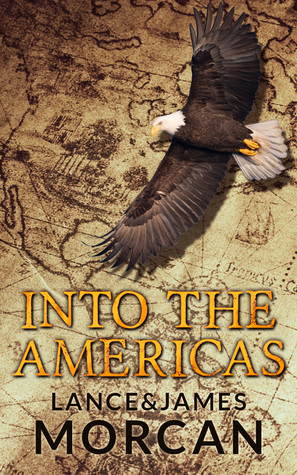
★★★★★ “Wow…never a dull moment.” –Tony Parsons –Amazon reviewer
***************************************








September 2, 2015
INTERNATIONAL BANKSTER$ — Coming soon to an ereader near you!
INTERNATIONAL BANKSTER$: The Global Banking Elite Exposed and the Case for Restructuring Capitalism (book five in our Underground Knowledge Series) is scheduled for a September/October release as a Kindle ebook on Amazon.
Book #5 in series.
The other books in The Underground Knowledge Series (in order of release) are:
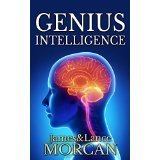
http://www.amazon.com/GENIUS-INTELLIGENCE-Techniques-Technologies-Underground-ebook/dp/B00QXQQWXO/

http://www.amazon.com/ANTIGRAVITY-PROPULSION-Technologies-Underground-Knowledge-ebook/dp/B00RSF22SI/
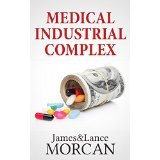
http://www.amazon.com/MEDICAL-INDUSTRIAL-COMPLEX-Suppressed-Underground-ebook/dp/B00Y8Y3TUM/

http://www.amazon.com/Catcher-Rye-Enigma-Coincidental-Underground-ebook/dp/B00YVROKZ4/
More books coming soon! Watch this space…
*****************************************








September 1, 2015
New release adventure novel enters Amazon’s bestseller lists
INTO THE AMERICAS (A novel based on a true story), the latest novel penned by New Zealand father-and-son writing team Lance and James Morcan, has entered Amazon’s bestseller lists, climbing into the top 10 Kindle ebooks in the crowded Action and Adventure category.
Readers resonate with this top 10 book.
A gritty, real-life adventure based on one of history’s greatest survival stories, Into the Americas was inspired by the diary entries of young English blacksmith John Jewitt during his time aboard the brigantine The Boston and also during his sojourn at Nootka Sound, on North America’s western seaboard, from 1802 to 1805.
It’s a tale of two vastly different cultures – Indigenous North American and European civilization – colliding head on. It is also a Romeo and Juliet story set in the wilderness.
To see what reviewers are saying about this top rating book go to: http://www.amazon.com/Into-Americas-novel-based-story-ebook/dp/B00YJKM51E/
******************************************
August 26, 2015
Introducing the Deep Web – aka Deep Net, Invisible Web, Hidden Web
Have you ever accessed the Deep Web and looked at any of the “secret” content on the Internet that’s not indexed via Google or other regular search engines? That’s the question posed in the latest poll in our Underground Knowledge discussion group on Goodreads.com – and interim results show few have (accessed it).
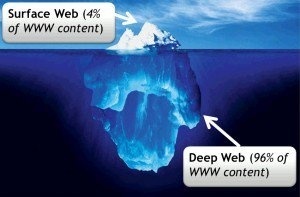
As of August 26 (US time) only 12% of poll respondents claim to have accessed the Deep Web; the balance either haven’t or are unsure.
A random sample of poll respondents’ comments follows:
I haven’t visited the Deep Web and not sure what technology or software allows one to access it, but recently became interested in the subject as per this discussion thread: https://www.goodreads.com/topic/show/…
It seems like the Deep Web could potentially have a lot of positive benefits…Kind of like the last line of defence if governments turn fascist or otherwise totalitarian. For example, the documentary mentioned how the Deep Web is being used in nations like China and Iran where the regular internet is highly censored by those governments and most (innocent) citizens are spied on. But again, the Deep Web definitely seems like a place where networks of criminals can work undetected and orchestrate crimes such as human trafficking more effectively.
As it is with almost everything, what makes the Deep Web dangerous is not the Deep Web itself, but the intent of one when accessing it. For instance, I know that some people go there and download technical books – mostly needed for work/academical reasons – when they can’t find such books anywhere else. That can’t be bad, right? But then again, if you go there looking for bad stuff, you might end up finding it.
My (limited) understanding is the Deep Web is legal content and the Dark Web is illegal content. So I guess I’m primarily focused primarily on the (legal) Deep Web and whether it can eventually become some kind of “Little Brother” technology the masses use to fight back against all the advanced technology of Big Brother… :)
No, and it doesn’t have any appeal for me either!
The news media kept telling me only criminals use the Deep Web…But then I heard 96% of the internet is the Deep Web that’s invisible to most users and that accessing the Deep Web is perfectly legal. So the criminal side is just one side to it, by the sounds of it. So now I’m wondering if there may be some useful or even life-changing info in that 96%…But I don’t pretend to understand the Deep Web and the concept is hard to get my head around it.
As far as I know, there is nothing illegal about accessing the Deep Web. What is illegal is to access it with criminal intentions in mind. There are actually very “out there” softwares that allow you to access it with considerable safety.
Deep Web for Journalists – Comms, Counter-Surveillance, Search looks along the lines of what I’m wondering might happen in future i.e. The Deep Web could become a way for whistleblowers to protect themselves.
As the mainstream media has repeatedly reported, there is obviously some really dark and sickening stuff occurring on the Deep/Dark Web – including crimes against children and even the hiring of assassins online to kill other citizens.
To view all the comments go to: https://www.goodreads.com/poll/list/142309-underground-knowledge—a-discussion-group?type=group
Poll ends September 7, 2015.
*
The Underground Knowledge discussion group is open to everyone! All you need is an enquiring mind, an interest in the world we live in and a desire to learn or to uncover “underground knowledge” on important issues of our times. This group is also for like-minded people to discuss the controversial topics explored in The Underground Knowledge Series, which includes the non-fiction books Genius Intelligence, Antigravity Propulsion, Medical Industrial Complex and The Catcher in the Rye Enigma.
Our members include scientists, journalists, moms and dads, historians, doctors, whistleblowers, authors, bankers, teachers, intelligence personnel, housewives, students, Army vets, pacifists, conspiracy theorists, the odd redneck and the Average Joe. All viewpoints welcome!
To visit the group, or better still to join the group and have YOUR say, go to: https://www.goodreads.com/group/show/142309-underground-knowledge—a-discussion-group
**************************************
August 24, 2015
Overprescribing and over-use of antidepressants downright depressing
Even more depressing than our ever-increasing reliance on drugs to combat high blood pressure is the overprescribing and over-use of antidepressants – especially where children are concerned. We address this in our book MEDICAL INDUSTRIAL COMPLEX: The $ickness Industry, Big Pharma and Suppressed Cures, and we examine the role mainstream medicine plays in all of this.
An excerpt from Medical Industrial Complex follows:
Statistically, there’s a very good chance you know someone who is taking Prozac or some other antidepressant right now. It may be a neighbor, or colleague, or a friend or family member, or, it may be you.
This no doubt has something to do with the readiness of people to talk about their depression or even their mental illness – conditions which, thankfully, are no longer burdened by stigma. It no doubt also has something to do with the widespread consumer acceptance of antidepressants as a solution for their depression.
According to some estimates, depression, that most common of mental illnesses, affects one quarter of all Americans.
A March 24, 2014 report in The Atlantic claims Americans are awash in pills. “The use of antidepressants has increased 400 percent between 1988 and 2008. They’re now one of the three most-prescribed categories of drugs, coming in right after painkillers and cholesterol medications”.
The situation, it seems, is little better elsewhere in the Western world. In the UK, for example, more than 50 million prescriptions for antidepressants are written every year if latest estimates are correct.
This figure is “staggeringly high,” according to an article in The Guardian dated April 13, 2014. It quotes Dr Matthijs Muijen, head of mental health at the World Health Organization Europe, as saying prescription levels have gone through the roof, claiming “There’s a degree of fashion about antidepressants”.
Dr Muijen admits his worry is “We are medicalising all forms of sadness in the belief that antidepressants are a safe drug that you just prescribe”.
In a report dated August 3, 2013, BBC News asks the question: “Is England a nation on anti-depressants?” It also asks why we are seeing “such huge and rising numbers of people” regularly taking anti-depressants when GPs are advised to prescribe them only for more seriously ill patients.
The report continues, “In some places the number of patients prescribed anti-depressants exceeds the number of people in that area estimated to suffer from depression and anxiety by the NHS England’s Psychiatric Morbidity Survey (PMS)”.
On June 21, 2013, Healthline News reported that a Mayo Clinic study found that nearly 70% of Americans are prescribed at least one medication, with antidepressants (along with antibiotics and opioids) topping the list.
The article quotes the National Alliance on Mental Illness as estimating one in four Americans experience a mental health disorder, such as depression or anxiety, in a given year. “Typical first-line treatments for mental health issues are medication and some type of psychotherapy…Critics who say antidepressant medications are overused often claim there is a chicken-and-egg phenomenon, saying that antidepressants are prescribed for normal human reactions to life events, leading to a lasting diagnosis of mental illness”.
The article concludes, “However, as the public mindset continues to change, there’s now less stigma attached to getting help for mental disorders, which may help explain the rise in antidepressant use”.
“Suicide rates have not slumped under the onslaught of antidepressants, mood-stabilizers, anxiolytic and anti-psychotic drugs; the jump in suicide rates suggests that the opposite is true. In some cases, suicide risk skyrockets once treatment begins (the patient may feel not only penalized for a justifiable reaction, but permanently stigmatized as malfunctioning). Studies show that self-loathing sharply decreases only in the course of cognitive-behavioral treatment.” –Antonella Gambotto-Burke, The Eclipse: A Memoir of Suicide
Predictably, the Psychiatric Times, whose audience is American psychiatrists and mental health professionals, doesn’t agree that antidepressants are overprescribed in the US. In an article dated September 1, 2014, that publication’s editor-in-chief Ronald W. Pies, MD, reports that, “by and large”, he doesn’t agree with the allegation that America has become a kind of Prozac Nation – a none-too-subtle reference to the title of Elizabeth Wurtzel’s 1994 memoirs perhaps.
“In many respects, the claim that ‘too many Americans are taking antidepressants’ is a myth,” according to Dr. Pies. “…To be sure: in some primary care settings, antidepressants are prescribed too casually; after too little evaluation time; and for instances of normal stress or everyday sadness, rather than for MDD (major depressive disorder),” he says.
“And, in my experience, antidepressants are vastly over-prescribed for patients with bipolar disorder, where these drugs often do more harm than good: mood stabilizers, such as lithium, are safer and more effective in bipolar disorder. But these kernels of truth are concealed within a very large pile of chaff”.
Dr. Pies continues, “For example, the media often report that antidepressant use in the United States has ‘gone up by 400%’ in recent years—and that’s probably true…But the actual percentage of Americans 12 years or older taking antidepressants is about 11%—a large proportion of the population, for sure, but not exactly Prozac Nation”.
So, though Dr. Pies – and by default Psychiatric Times and no doubt the majority of psychiatric professionals in the US – disputes the allegation that America has become a kind of Prozac Nation, there seems to be a reluctant acknowledgement that antidepressants are vastly over-prescribed for patients suffering one type of mental illness at least, and that it’s probably true that antidepressant use has risen 400% in the US.
If that doesn’t constitute a Prozac Nation, not sure what does…
Washington D.C. writer Brendan L. Smith, reporting on the American Psychological Association’s website in June 2012, reports that research shows that all too often, Americans are taking medications that may not work or that may be inappropriate for their mental health problems.
Smith observes that writing a prescription to treat a mental health disorder is easy, but it may not always be the safest or most effective route for patients, according to some recent studies and a growing chorus of voices concerned about the rapid rise in the prescription of psychotropic drugs.
“Today, patients often receive psychotropic medications without being evaluated by a mental health professional, according to…the Centers for Disease Control and Prevention. Many Americans visit their primary-care physicians and may walk away with a prescription for an antidepressant or other drugs without being aware of other evidence-based treatments…that might work better for them without the risk of side effects”.
Smith quotes Steven Hollon, PhD, a psychology professor at Vanderbilt University, as saying at least half the folks who are being treated with antidepressants aren’t benefiting from the active pharmacological effects of the drugs themselves but from a placebo effect. “If people knew more,” Hollon says, “I think they would be a little less likely to go down the medication path than the psychosocial treatment path”.
Smith claims Prozac opened the floodgates. “Since the launch of Prozac, antidepressant use has quadrupled in the United States…Antidepressants are the second most commonly prescribed drug in the United States, just after cholesterol-lowering drugs”.
Smith also quotes Daniel Carlat, MD, associate clinical professor of psychiatry at Tufts University, as saying health insurance reimbursements are higher and easier to obtain for drug treatment than therapy, which has contributed to the increase in psychotropic drug sales.
“There is a huge financial incentive for psychiatrists to prescribe instead of doing psychotherapy,” Dr. Carlat says. “You can make two, three, four times as much money being a prescriber than a therapist”.
“As James Surowiecki noted in a New Yorker article, given a choice between developing antibiotics that people will take every day for two weeks and antidepressants that people will take every day forever, drug companies not surprisingly opt for the latter. Although a few antibiotics have been toughened up a bit, the pharmaceutical industry hasn’t given us an entirely new antibiotic since the 1970s.” -Bill Bryson, A Short History of Nearly Everything
You have been reading an excerpt from Medical Industrial Complex. Watch this space for our take on the prescribing of antidepressants to children. Meanwhile, you can find this book on Amazon: http://www.amazon.com/MEDICAL-INDUSTRIAL-COMPLEX-Suppressed-Underground-ebook/dp/B00Y8Y3TUM/

****************************************








August 21, 2015
No subject taboo in our ‘Underground Knowledge’ group on Goodreads.com — Check it out!
Flight MH370, Princess Diana, Boston Bombings, 9/11, suppressed science, hidden cures, MK-Ultra, undeclared fortunes, drugs wars, media manipulation, banned books of Bible, global warming and more… No subject is off limits in our Underground Knowledge group on the popular literary site Goodreads.
Membership of the group has just topped 1100, reinforcing our belief that members welcome our freedom of speech policy and our no rules ‘rule’.
The group is open to everyone! All you need is an enquiring mind, an interest in the world we live in and a desire to learn or to uncover “underground knowledge” on important issues of our times. Our members include scientists, journalists, moms and dads, historians, doctors, whistleblowers, authors, bankers, teachers, intelligence personnel, housewives, students, Army vets, pacifists, conspiracy theorists, the odd redneck and the Average Joe. Everyone’s welcome!
A small sample of some of the group’s most contentious or interesting discussion threads follows:
The 2016 U.S. Presidential Election
Was 9/11 a false flag attack and ‘Inside Job’? 54% of you voted YES
The Slap TV show, Child Trafficking and Corrupt Child Protection with Tammi Stefano
Finding (hiding) a cure for cancer
New Zealand Now Recognizes ALL Animals As Sentient Beings
James Morcan discusses Underground Knowledge on Boston’s Philosophic Perspectives Radio Show
What really happened to AA Flight 587?
25 Signs That The Global Elite’s Ship Is About To Sink
Is the Islamic State (IS/ISIS) another invention of the West?
The US Military’s proposal to kill American civilians (Operation Northwoods declassified)
Mozart & shattering the inborn genius myth
Are aliens visiting Earth or not????
How much is Queen Elizabeth II worth??
To visit the Underground Knowledge group, or better still to join and have YOUR say, go to: https://www.goodreads.com/group/show/142309-underground-knowledge—a-discussion-group
*********************************




















